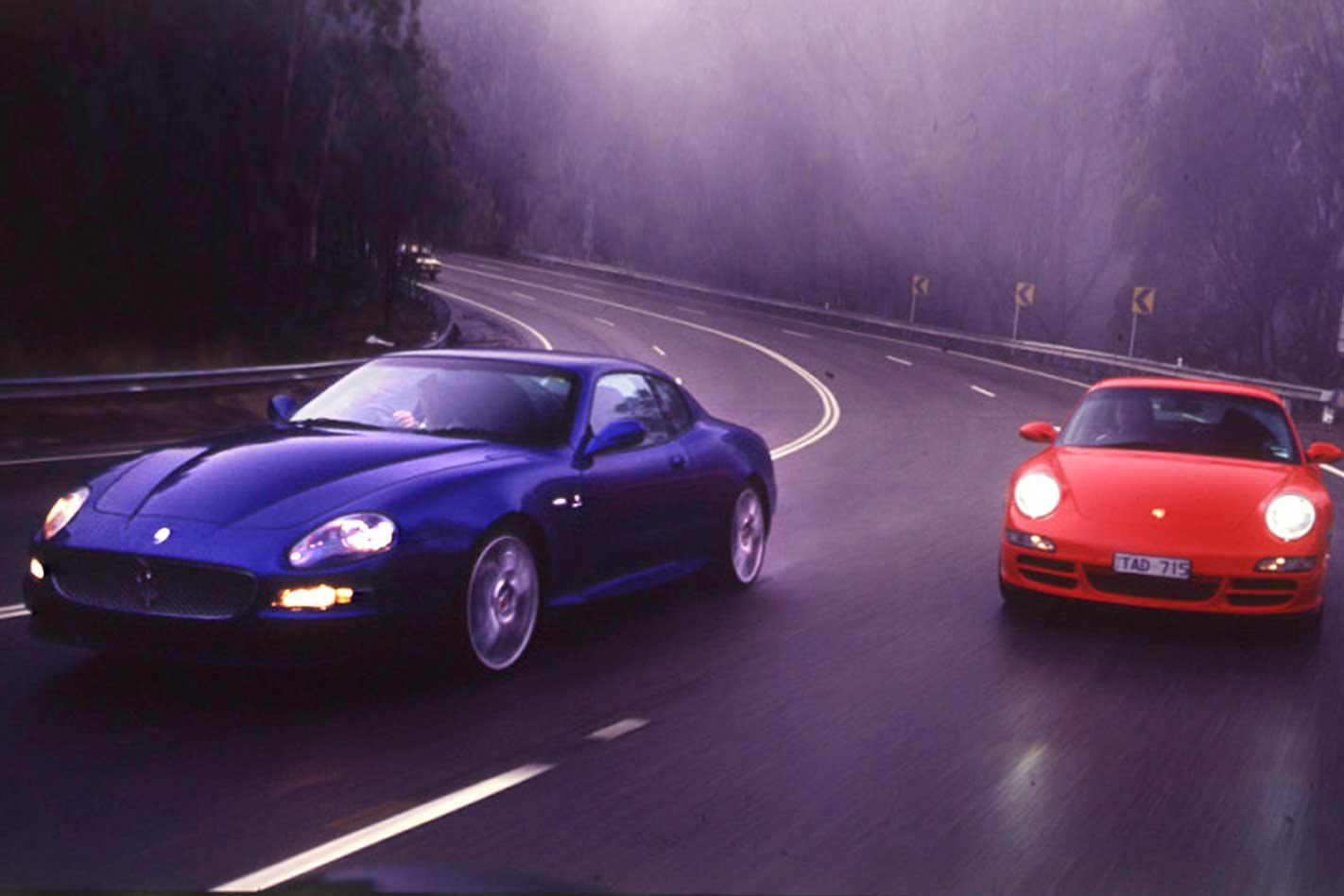It’s 9:30am and I’m stuck at my desk when I should already be west of the Blue Mountains.
This feature was originally published in MOTOR’s February 2005 issue
The key to a Guards Red 911 Carrera S sits just in front of the keyboard, shouting at me to hurry up. Marcus has called long ago, telling me he’s collected the Maserati GranSport and shooter Wielecki, and they’re on their way to the rendezvous point.

After last month’s first drive of the GranSport, we figured it deserved a shot at the 997 Carrera S – the benchmark, sub-supercar coupe. To really test the Gran Touring abilities of these two exceptional cars, we wanted to cover some serious distance and to do that, agreed to stab westward, into the big-sky country that lies beyond Dubbo in central western NSW.
The GranSport really impressed us last month. It’s got an evocative name, a sense of occasion and a level of exclusivity that the Porsche cannot hope to match, but more importantly, it may finally have the substance to back up all the boasting.
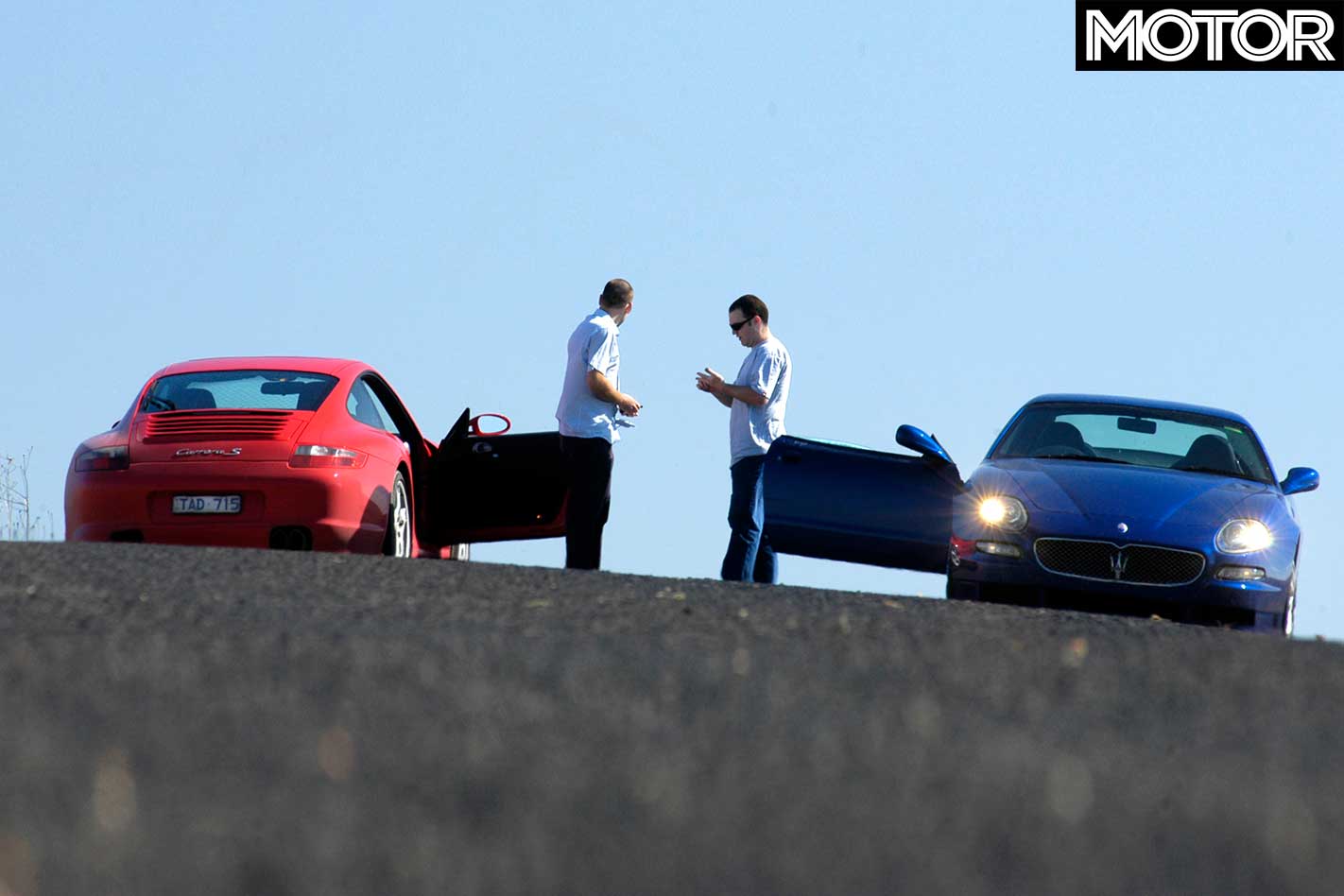
Whereas previous Maseratis we’ve driven have been a collection of outstanding parts (the engine) and disappointments (shift quality and dynamic ability), the GranSport finally puts more of the pieces together.
That jewel-like 4.2-litre quadcam V8 (which now forms the basic architecture for the Ferrari F430 engine) is even more powerful in GranSport form. Power jumps from 287kW to 295kW at 7000rpm and peak torque sneaks up a single Newton metre to 452Nm at 4500rpm.
The Porsche gives the Maserati a two piston, 400cc, 34kW and 52Nm head start, from its 3.8-litre 261kW, 400Nm flat-six. But that’s always been the thing with Porsches; they’re never that impressive on paper.
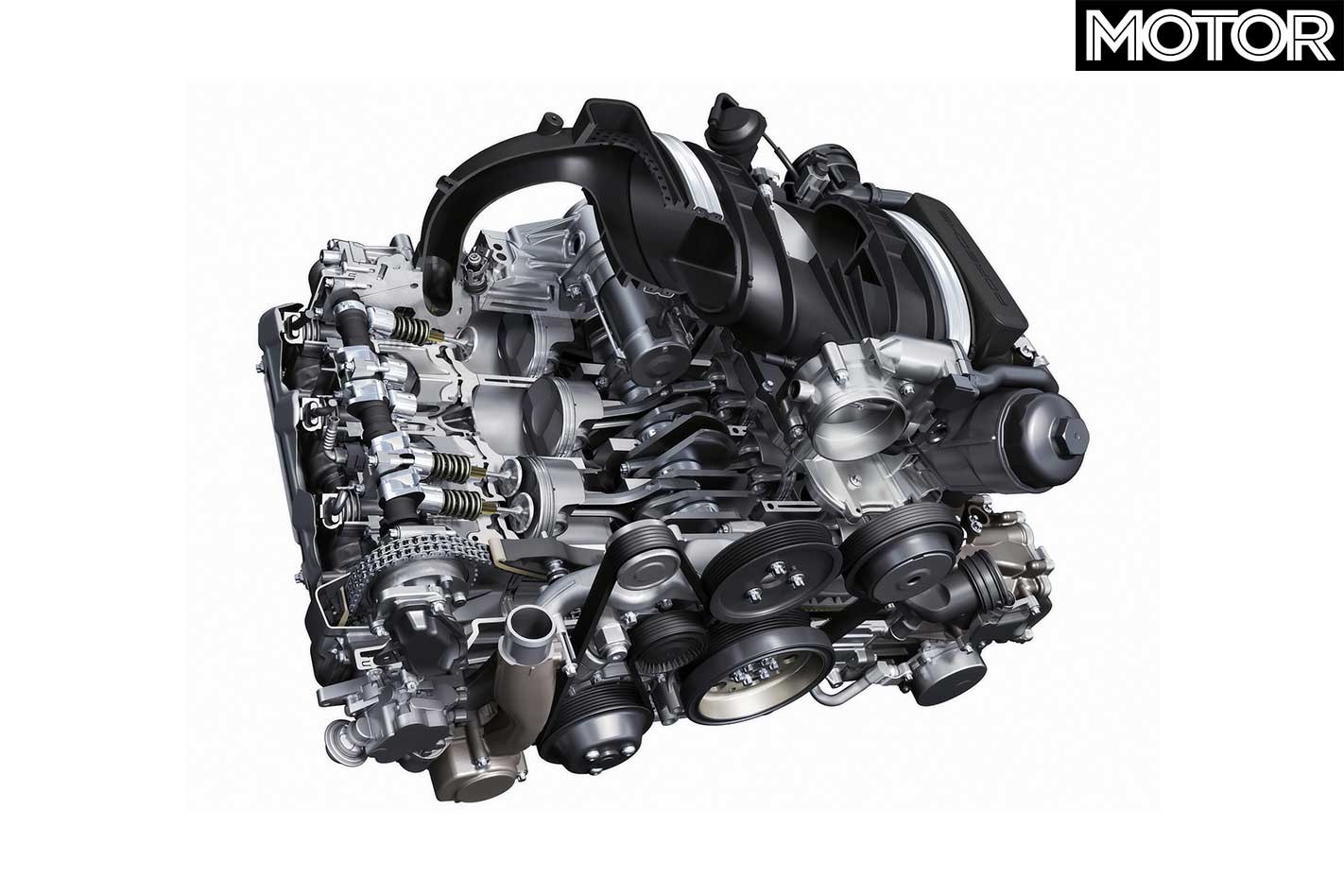
It’s not until you get behind the wheel of one that you can fully appreciate the level of technical perfection that the Stuttgart engineers have squeezed into the most recognisable shape in automotive history. As Michael Taylor said at PCOTY a few years back – when Porsche’s Boxster S took the gong – they are more than the sum of their parts.
Both cars are significantly better lookers than the previous models. And in the case of the 911, the return to traditional oval headlights set into the ends of the more pronounced pontoon guards, gives the 997 a look not dissimilar to the 993 model – which is held in high regard by Porsche-philes, as it was the last of the air-cooled 911s. The pinched waist and swollen rear arches are further visual highlights.
But it’s not until you’re travelling directly behind the Porsche that you realise just how broad-beamed the 911 is, a point hammered home when you spot the huge 295/30 ZR19 Michelin Pilot rubber.

To the great unwashed, the GranSport might look like any other Maserati Coupe but Ferrari’s new chief designer, Frank Stephenson (also responsible for the MINI) has significantly reworked the aesthetics and aerodynamics.
Most noticeable of the changes is the extended Quattroporte-esque nose with the wider mouth, but there’s also curved sill skirts and a small carbon fibre lip on the boot. The GranSport’s look is further enhanced by the 10mm drop in ride height and the chunky 19-inch alloys (which borrow their style from the Trofeo racecars).
Aside from any subjective improvement to looks, the changes make the GranSport more stable at highspeed with an increase in downforce and a better balance of lift between the two axles. The shape is also more slippery through the air with an overall drag co-efficient of 0.33.
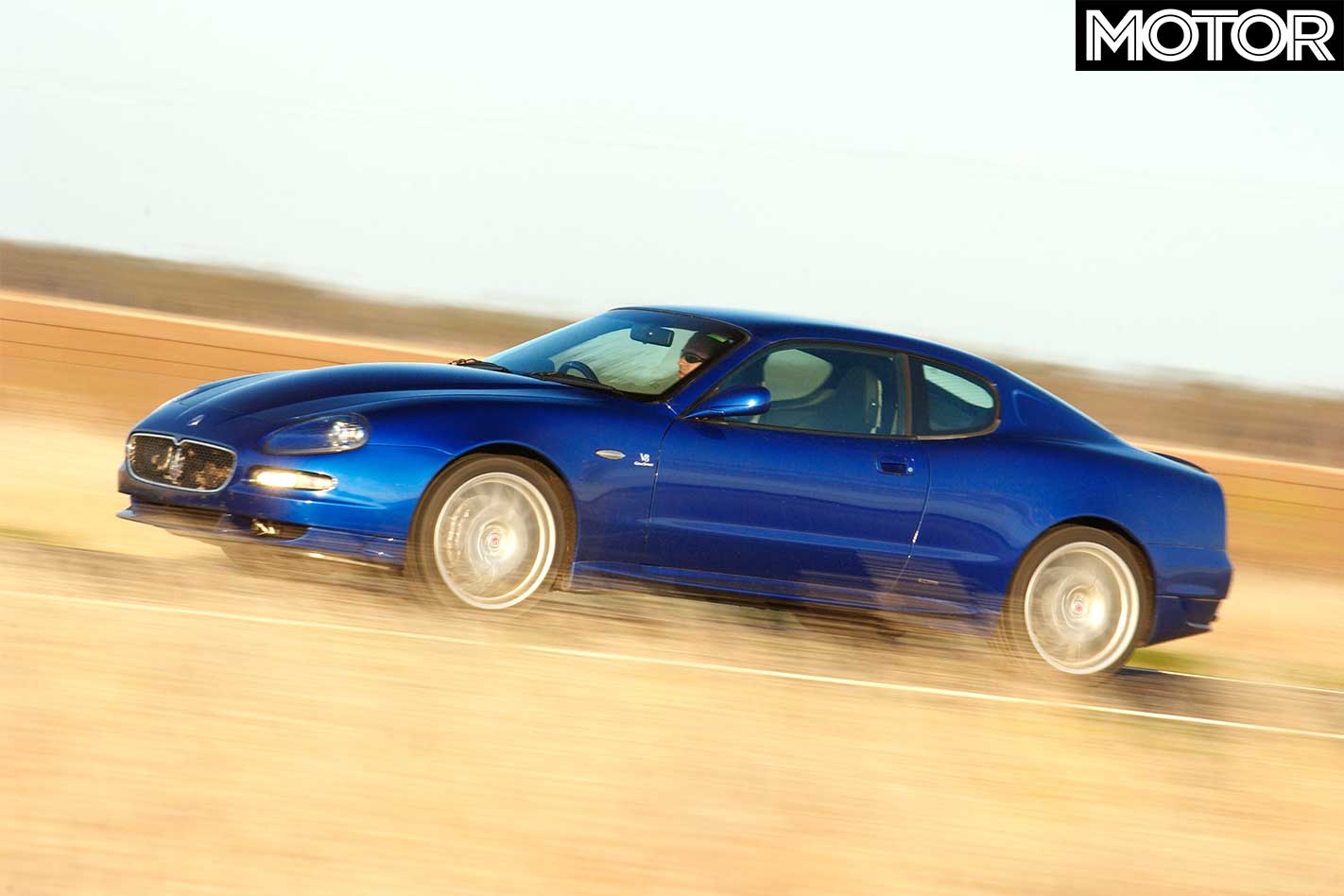
We reach the meeting point and I jump from the 911 to the Maser. You start the naturally-aspirated V8 with a twist of the key and a jab of the blue starter button. It cracks to life with a potent burst of noise.
Poke the Sport button and the note hardens as the exhaust by-pass valve opens and back pressure is reduced. The Sport button also heightens the stability control programming, firms up the Skyhooks adaptive suspension and brings quicker shift times from the six-speed sequential manual Cambiocorsa ’box.
This is the only gearbox available for the GranSport but as we’ve never driven a conventional six-speed manual (available as a delete option in the Coupe and Spyder) we don’t know if we’re missing anything.
We’ve previously reported that this gearbox, while fast shifting, can thump brutally as each gear is slammed home. So, when we learnt the GranSport’s Cambiocorsa was programmed to change even faster, there was a collective wince.
No need to worry though, because the quicker shifts (35 percent faster in Sport mode) actually smooths the process. Sure, full-blooded redline shifts will still thud into the rear-mounted transaxle, but they no longer rattle the superstructure of the car. And the automatic heel-and-toe throttle blip on downshifts is nape-prickling.
Below 2000rpm, the Maserati engine is surprisingly soft for a bent-eight displacing 4.2 litres. But as the revs rise, the power builds and the deep V8 rumble gives way to a creamy mechanical concert.
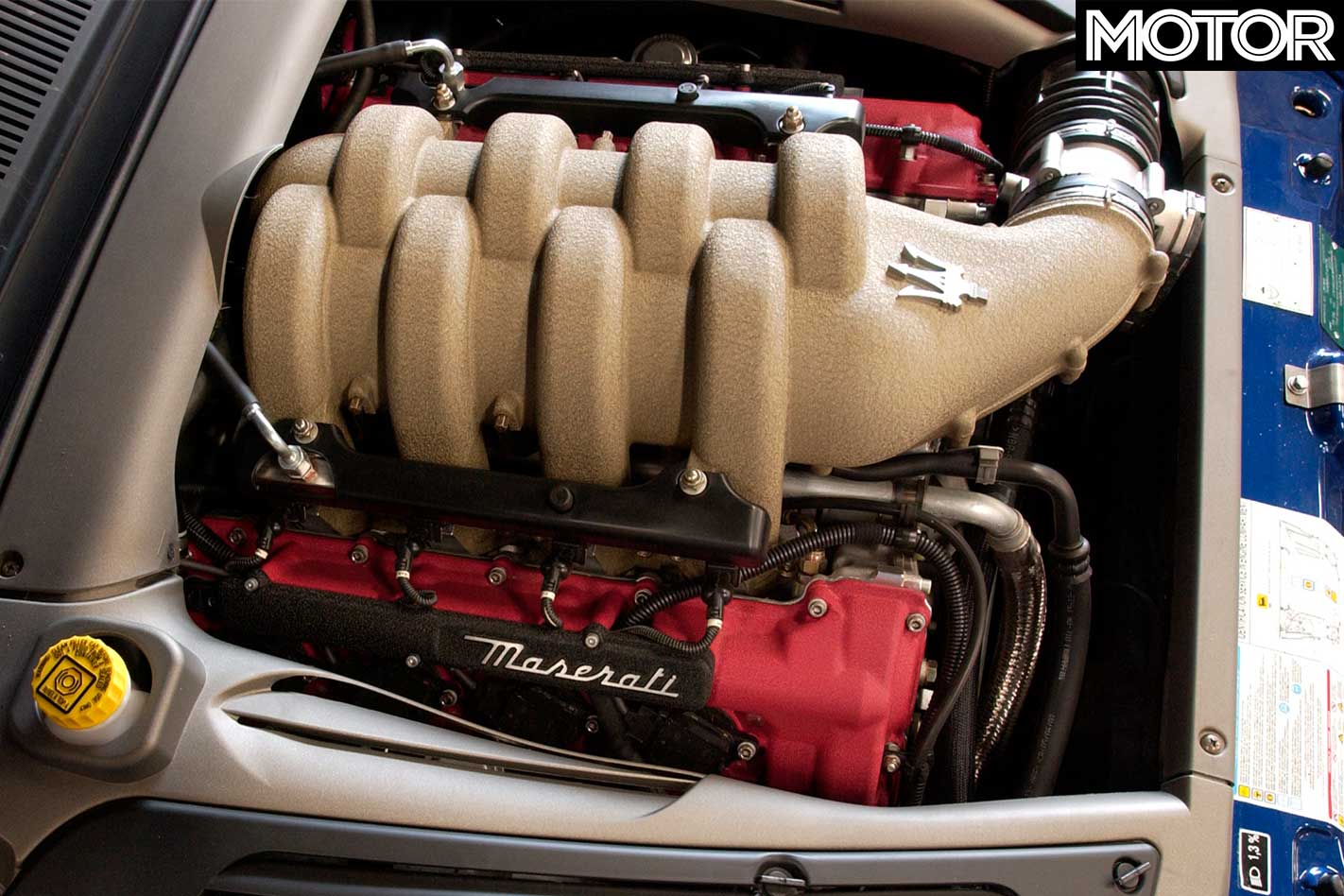
The Porsche plays a different tune and is so tractable at low engine and road speeds. Although the six-speed ’box is one of the best to ever shift cogs and has a firm but fast shift action and a heavy but positive clutch take-up, the boxer’s torquey nature forgives lazy driving and allows the 911 to carry a higher gear without a stumble or judder of complaint.
But for all its low-end flexibility, it’s the top-end of the 911 that’s truly astounding. From 5000rpm the big boxer takes another deep lung full of oxygen and hammers the tacho and speedo needles toward their end stops. Above 200km/h the acceleration is no less vigorous than the seat-pinning punch at 100km/h.
Find a road or runway long enough and the 911’s electronic speed display (found inside the analogue dial) will flash 303km/h at the top of sixth gear.
Before stretching into the far reaches of the speedo, the 911 will storm to 100km/h in 4.87 seconds and cross the quarter in 13.08 seconds at 175.8km/h – both figures are right on the Porsche claim.
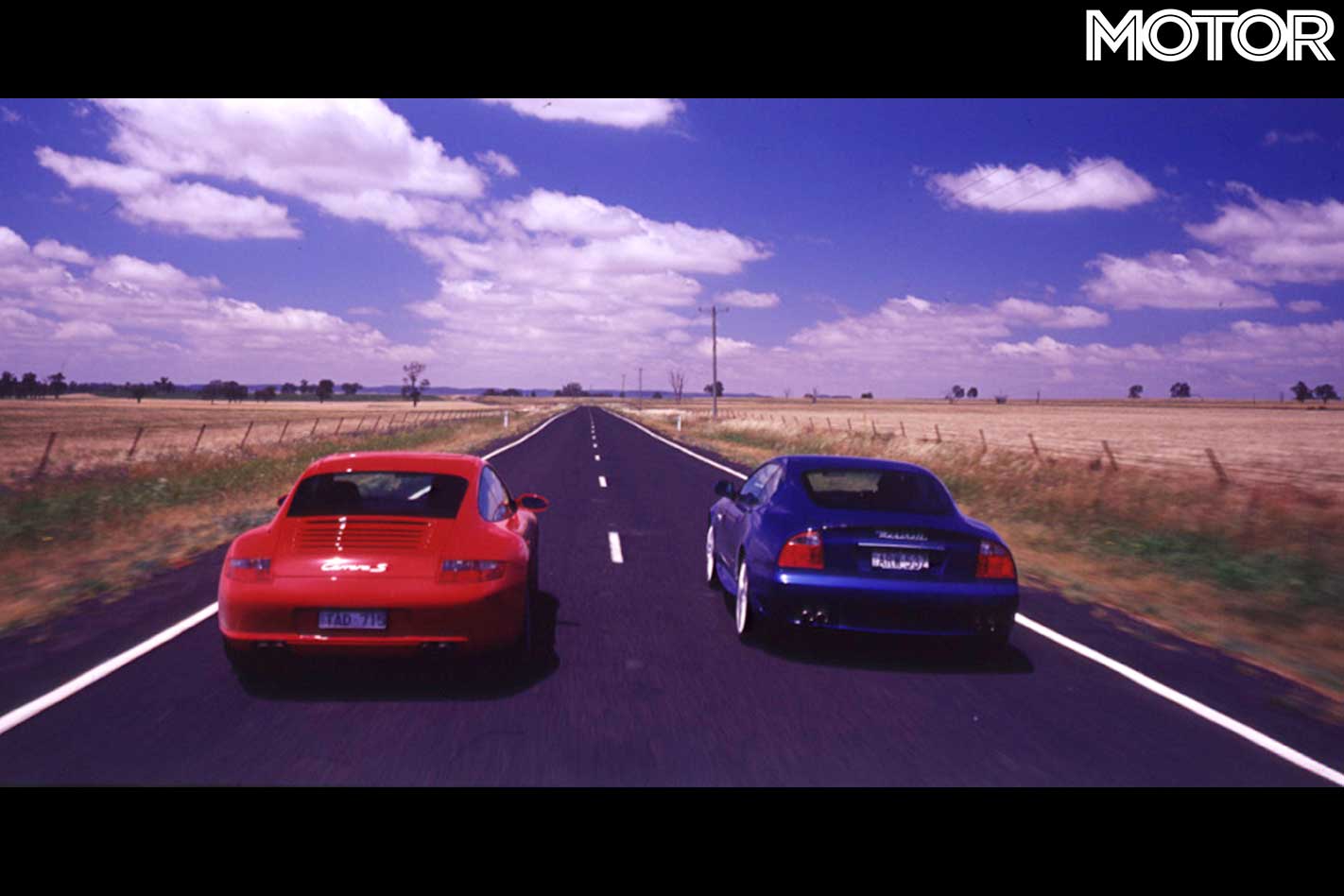
Maserati claims a 290km/h V-max, but it’ll take longer to get there. This is due, partly, to the GranSport’s four percent taller sixth gear, but also because the V8 lacks the ultimate top-end punch of the the 911’s flat-six .
Where the 911 really hooks up off the line (thanks to the weight over the rear axle) the Maserati is much harder to modulate off the start. Despite a Porsche-matching claim of 4.85 seconds, the best we could manage to 100km/h (on a low kay example) was 5.37. Most of that difference is lost as the PZeros struggle for grip. From 100km/h the Maserati starts to make up a bit of ground with a 13.46 0-400m time, and a 173.7km/h terminal speed.
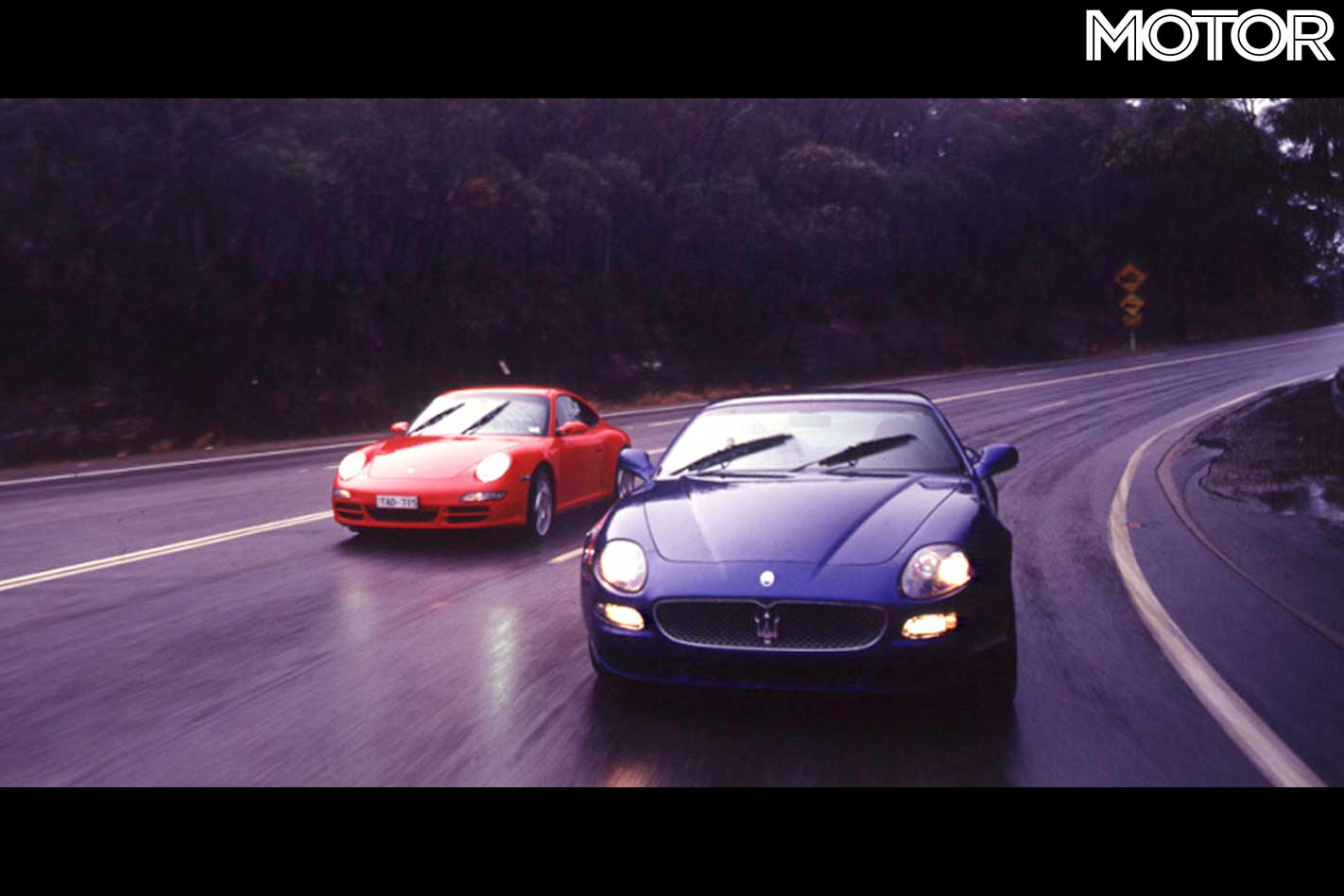
Somewhere between nowhere and the horizon, we pass the law. We’d not seen a car for a while, but as we pop over a slight rise, with the nose of the Maser (sans numberplate) buried up behind the rump of the 911 for a tracking shot, a marked-up Nissan Patrol flashes by.
Heart rates rise and sure enough there’s a splurge of brake lights on the back of the Patrol. A few minutes later he’s on us, lights ablaze, so I ease the Maserati onto the dirt shoulder, only for the cop to drive by in pursuit of his German prey. Wanting to help with explanations and share any blame, I slot in behind the captor and quarry.
Questions are asked. What was that hanging from the side of the Porsche? Why was that blue car so close? But most pointedly, why do we have the best part of half-a-million bucks in cars?
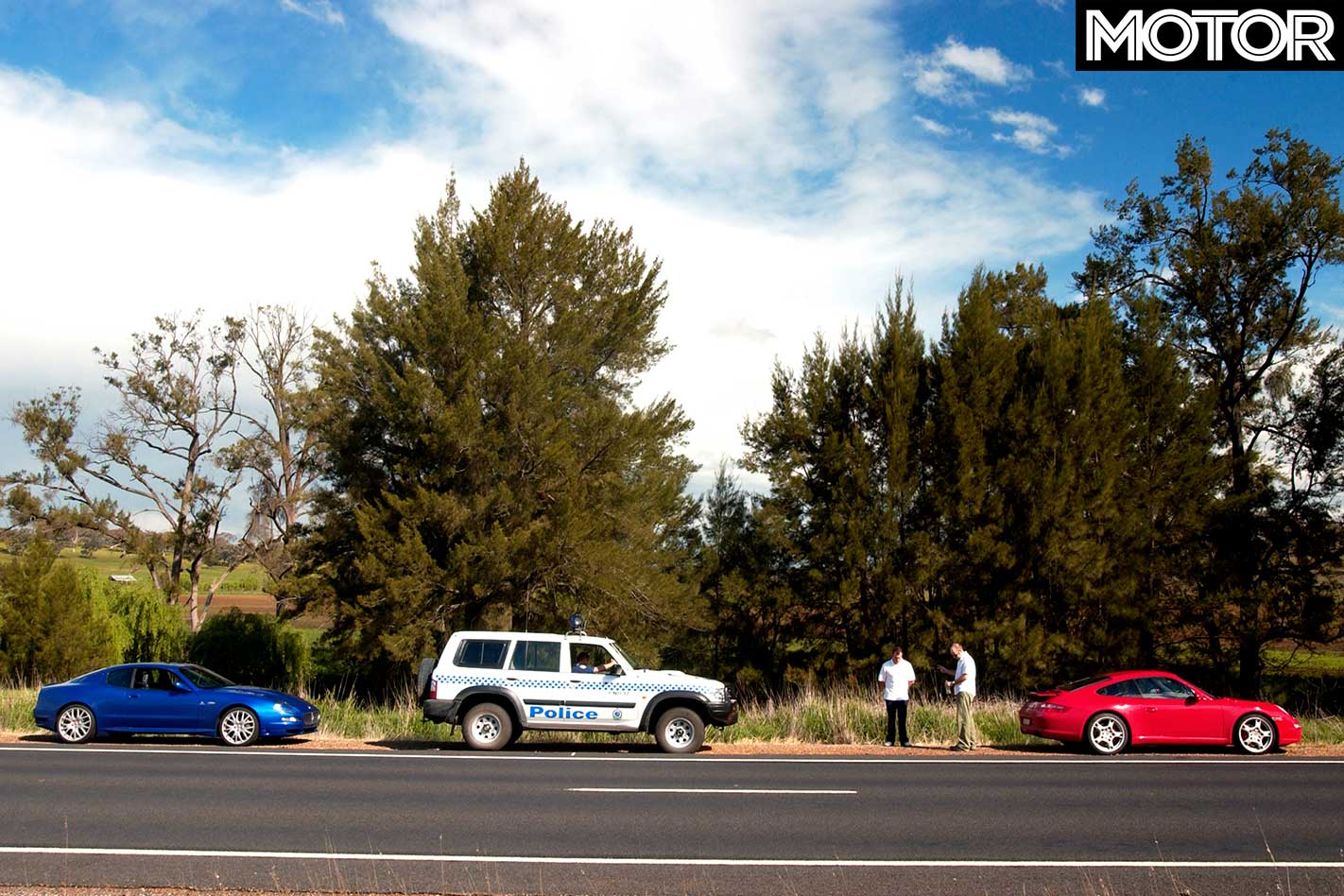
All easy to answer and the officer realised we weren’t doing anything dangerous, so let us off with a warning. He also told us if we wanted to do such photography, perhaps we could use one of the side roads.
So with photography suspended, we push on, looking for one of these suitable side roads. Jumping from Maserati to 911 and back again, I’m struck by how far the Italians have come on interior quality. The construction and material (carbon fibre, soft leather and a fabric sourced from Giorgio Armani) of the GranSport’s cabin is just about spot on, but without the smug mass-produced perfection you find in Audis.
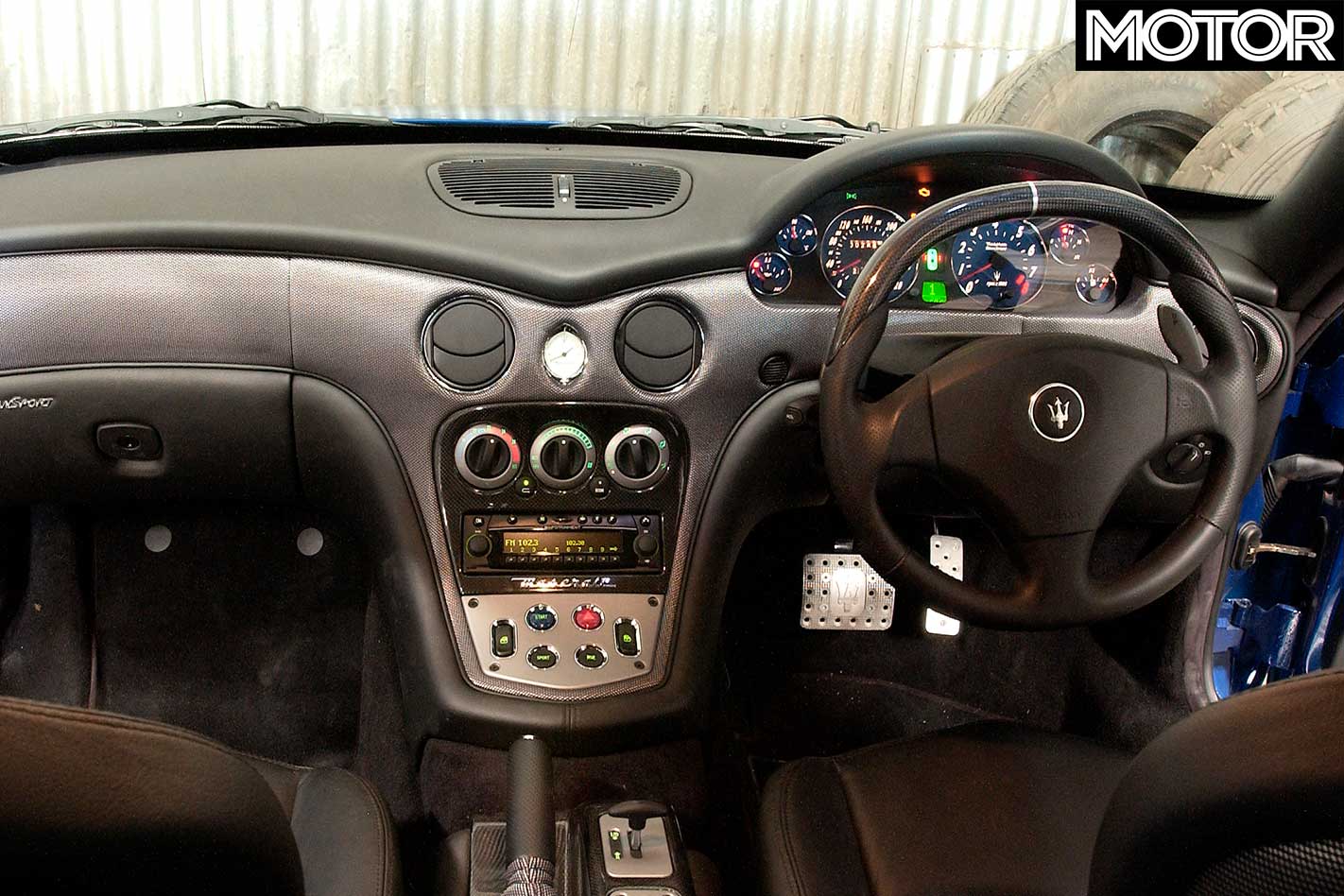
The Maserati still has that indefinable character of a low-volume, exclusive car, but without the shoddiness you used to find in such cars not that long ago. Still, it’s impossible to give the Maserati full marks when the ergonomics are so far off the pace. About the only thing further away than the top of the steering wheel (which also obscures some of the gauges), is the power window buttons.
The Porsche cabin, though ergonomically perfect, is uncharacteristically alive with rattles and squeaks. Technically the 997 cabin is better than the old model, with improved materials, construction (save the rattles of this example) and level of equipment.
All major controls are perfectly placed and their actions carry the correct weighting. Perhaps the only caveat is the steering. With the Carrera S fitted with adjustable dampers and variable ratio steering, there’s a sneaking suspicion that the wheel is not as talkative as it could be.
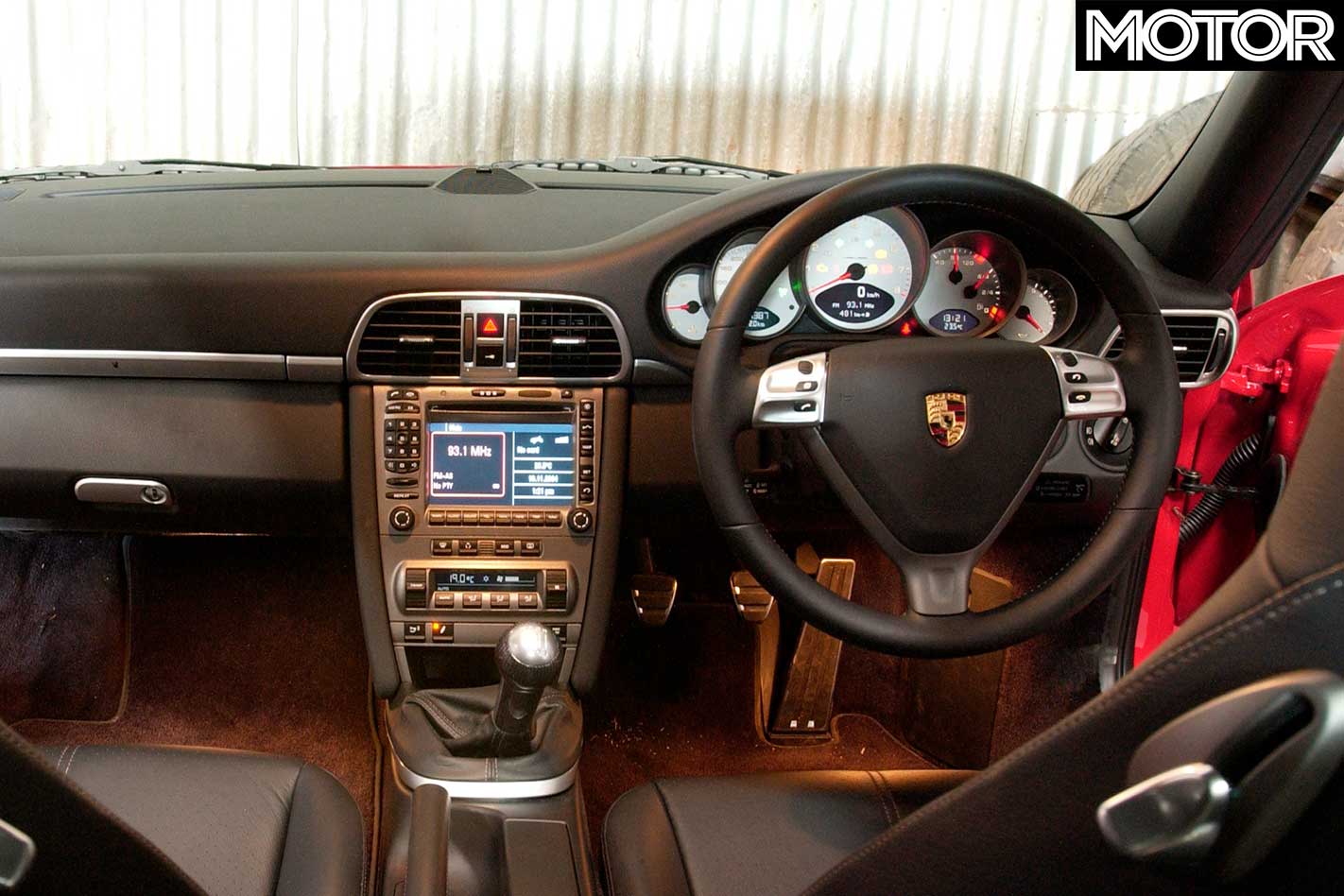
In isolation, or even in comparison with the Maserati, you’d never know. But those familiar with any 996 model or even the base model 997 Carrera, will feel the difference. It’s nothing major, just an initial fuzzyness as the steering wipes sleep from its eyes.
But that’s the only dynamic gripe you can level at the 911. Otherwise, it gets close to perfection with extraordinary grip from both ends, immediate turn-in and faithful feedback.
The ride is firm (it does wear 19s) but there’s genuine suppleness at medium and high speeds, which is just what you want when you’re pushing on. And the brakes will never quit on you. Dirty great 330mm discs straddled by four-piston monobloc calipers stop time and time again without the merest suggestion of fade.
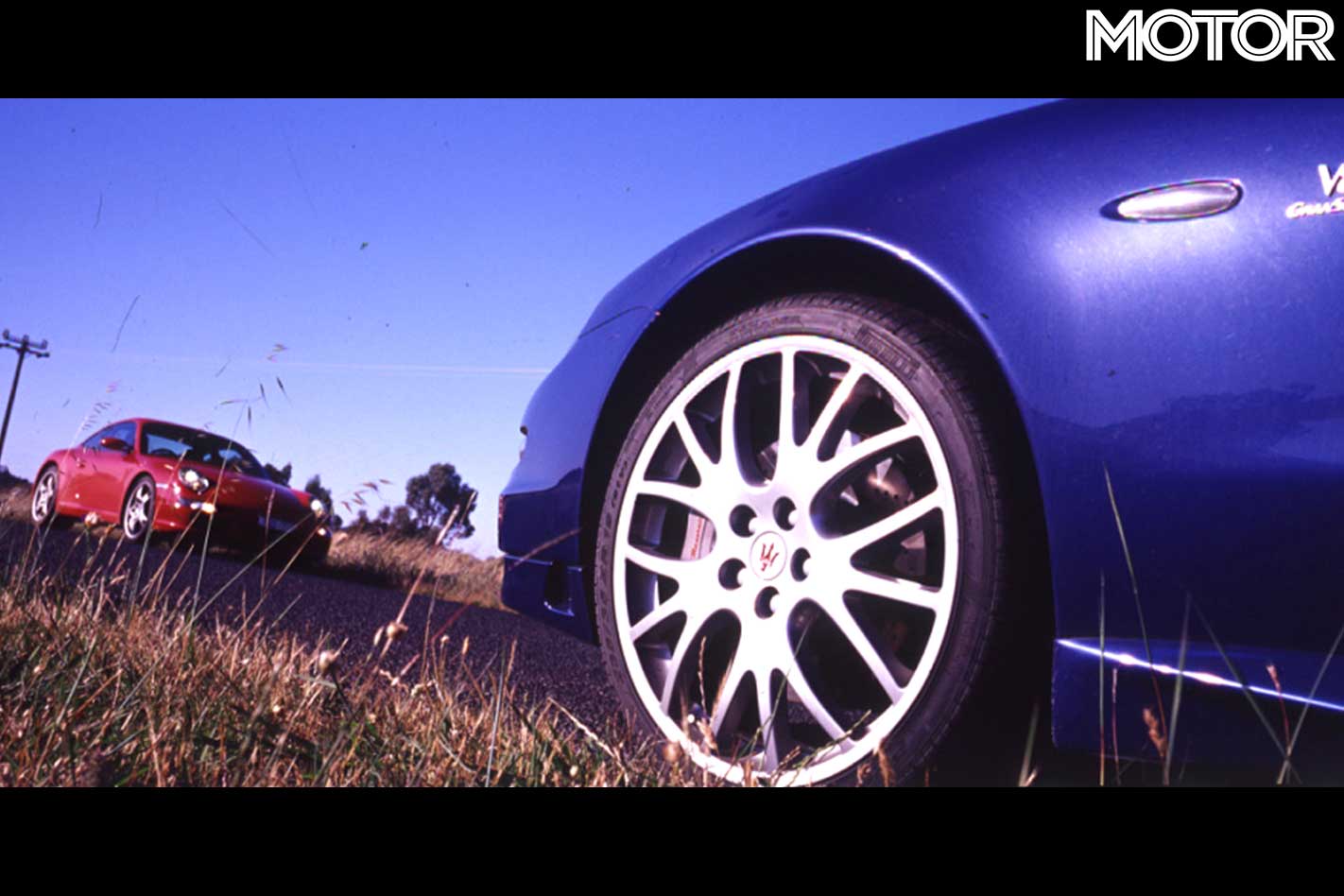
The Maserati’s lower and firmer suspension is so far ahead of previous Coupes that comparison is pointless. The older models felt like you were driving a bar of soap, never knowing when it would slip from your grasp, but the GranSport is a Maser you can trust.
At low speed the ride quality is remarkable (far superior to the Porsche) but as the stakes and speed are raised, there’s not the body control of the 911. Grip is tenacious, and messages from the treadblocks actually do make it to your hands, whereas the older car would play Chinese whispers with feedback.
In just a day-and-a-half of hard driving we’ve added over 1200km to the odometers of each car and both crushed the distance with ease, but the win goes to the 911.
With the exception of seating capacity, the Porsche plays the GT role just as well as the GranSport, but can slip into superman mode and tug at the capes of genuine supercars. And that’s probably the point, not only is it $20k cheaper than the Maserati, but to find better, you’re looking at the $400,000 Lamborghini Gallardo.
Fast Facts
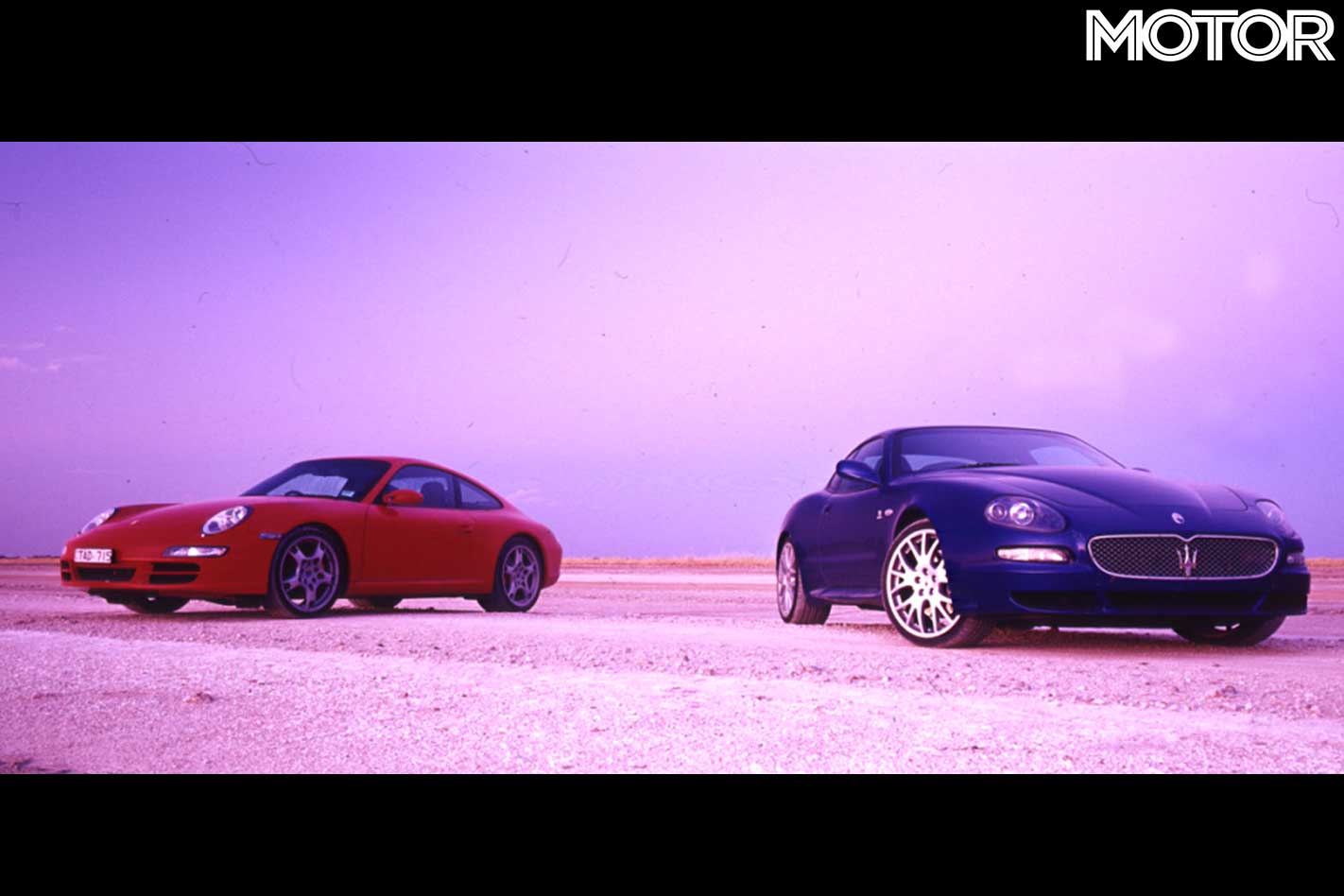
| u00a0 | 2005 Porsche 911 Carrera S | 2005 Maserati GranSport |
| BODY | two-door coupe | two-door coupe |
| DRIVE | rear-wheel | rear-wheel |
| ENGINE | rear-mounted 3.8-litre 24-valve DOHC flat-six | front-mounted 4.2-litre DOHC 32-valve V8 |
| BORE x STROKE | 99.0mm x 82.8mm | 92.0mm x 79.8mm |
| COMPRESSION | 11.8:1 | 11.1:1 |
| POWER | 261kW @ 6600rpm | 295kW @ 7000rpm |
| TORQUE | 400Nm @ 4600rpm | 452Nm @ 4500rpm |
| WEIGHT | 1420kg | 1680kg |
| POWER/WEIGHT | 184kW/tonne | 176kW/tonne |
| TRANSMISSION | six-speed manual | six-speed sequential manual |
| SUSPENSION (f) | MacPherson struts, coil springs, adaptive dampers, anti-roll bar | double wishbones, coil springs, adaptive dampers, anti-roll bar |
| SUSPENSION (r) | multi-link, coil springs, adaptive dampers, anti-roll bar | double wishbones, coil springs, adaptive dampers, anti-roll bar |
| L/W/H | 4427/1808/1300mm | 4523/1822/1295mm |
| WHEELBASE | 2350mm | 2660mm |
| TRACKS | 1486mm (f); 1511mm (r) | 1525mm (f); 1538mm (r) |
| BRAKES (f) | 330mm cross-drilled & ventilated discs, 4-pistonu00a0calipers | 330mm cross-drilled & ventilated discs, 4-piston calipers |
| BRAKES (r) | 330mm cross-drilled & ventilated discs, 4-pistonu00a0calipers | 310mm cross-drilled & ventilated discs, 4-piston calipers |
| FUEL | 64 litres, PULP | 88 litres, PULP |
| WHEELS | 19 x 8.0-inch (f);u00a019 x 11.0-inch (r) | 19 x 8.0-inch (f); 19 x 9.5-inch (r) |
| TYRES | Michelin Pilot Sport;u00a0235/35 ZR19 (f), 295/30 ZR19 (r) | Pirelli PZero Rosso;u00a0235/35 ZR19 (f), 265/30 ZR19 (r) |
| PRICE | $221,500 | $242,500 |
Gran Turismo 3 Like the idea of a GT but not sold on the Maserati or 911?
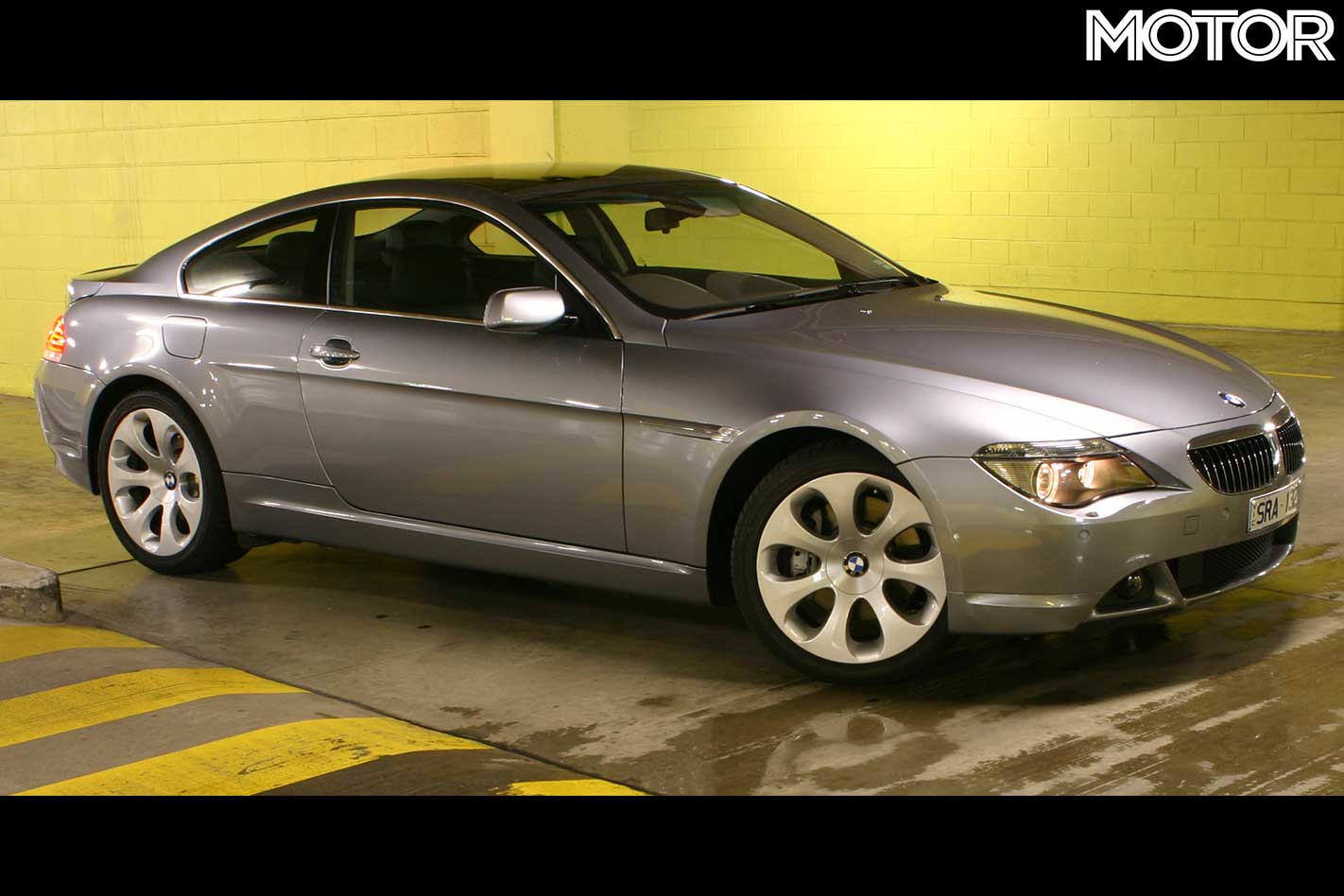
From BMW you’ve got the choice of the 645Ci coupe at $203,000 or the $220k convertible. Both are powered by a 245kW 4.4-litre V8 but there’ll be a 373kW 5.0-litre V10 M6 late this year or early 2006. Jaguar’s 298kW XKR has loads of sting, but is feeling its advanced years. There’s a coupe and drop top with prices starting at $209k.
Mercedes-Benz is in on the game as well with the CLK55 AMG. A naturally-aspirated 5.4-litre V8 delivers 270kW with coupe at $195k and convertible at $209k.
City Slickers Taking half a million bucks worth of exotica to the bush
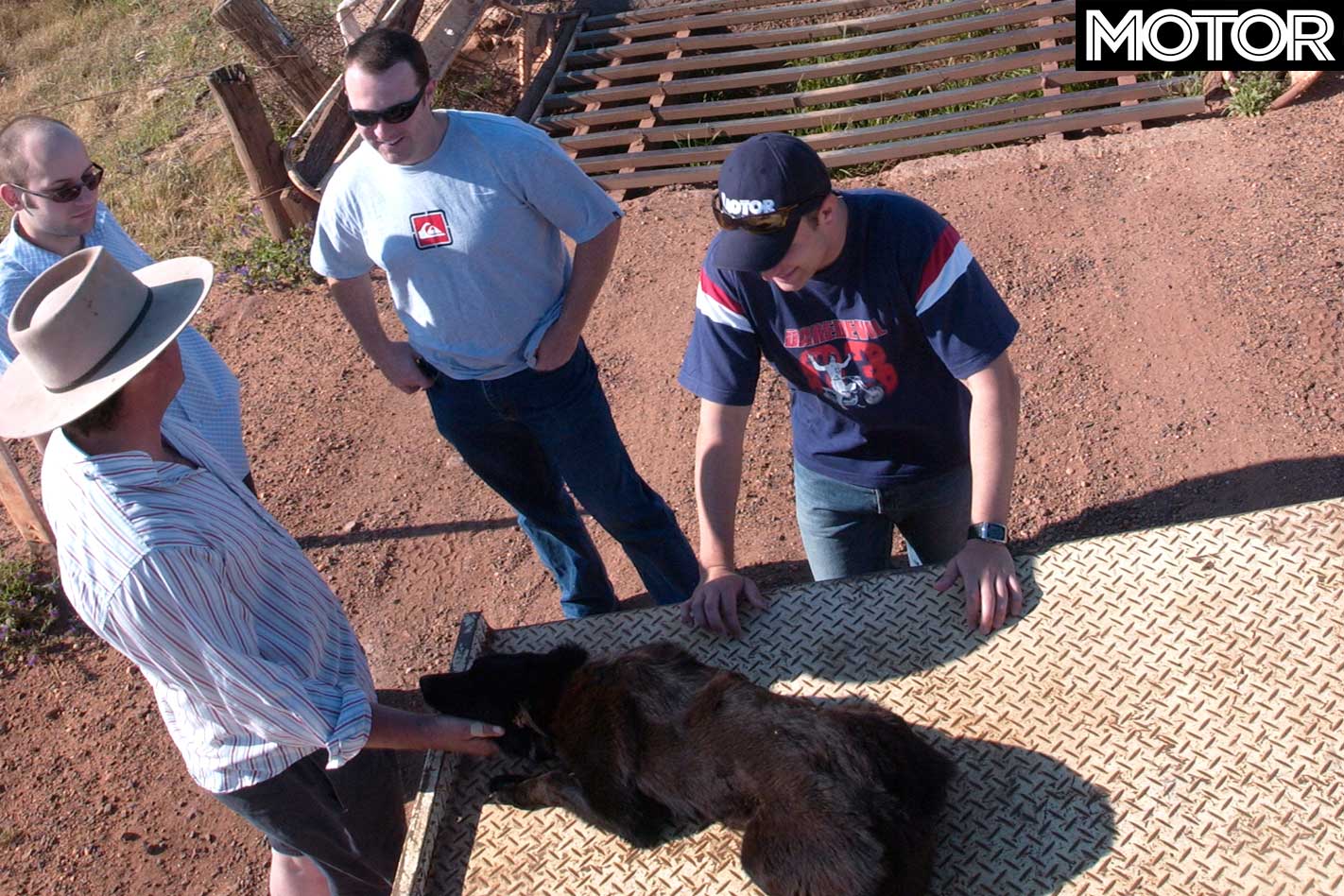
MOTOR’s logistics king, Marcus Hofmann is great for getting lots of cars and people together in the one place. He’s also pretty handy behind the wheel, but take ‘Herman’ west of the Blue Mountains and he’s out of his comfort zone. So, 500 kays west of the mountain range the confirmed city-slicker is a long way from home.
Searching for a suitable photographic location, we stumbled across a local farmer and about 300 head of sheep. Standing amidst said sheep, Marcus – a firm believer that there are no stupid questions – asks our new found friend, “So, you only have cattle out here, ya?”
In the mix of bewildered glances and nervous feet-shuffling that followed, the still country air somehow got even quieter. Even the distant crows stopped their faaarking to have a quiet chuckle.

